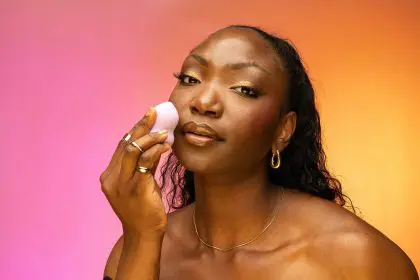Permalink:
Focus Keyword: diabetes symptoms mistaken illnesses
Tags:
You’ve been feeling tired lately, but you chalk it up to work stress. You’re getting up to use the bathroom more often at night, but you figure you’re just drinking more water. Your vision seems a bit blurry, but maybe it’s time for new glasses. What you might not realize is that your body could be sending you urgent signals about diabetes.
The tricky thing about diabetes symptoms is that they often mimic common, everyday health complaints that people easily dismiss or attribute to other causes.
1. Constant fatigue that feels like burnout
When blood sugar levels are consistently high, your cells can’t effectively use glucose for energy, leaving you feeling exhausted even after a full night’s sleep. This isn’t the kind of tiredness that goes away with rest — it’s a bone-deep fatigue that interferes with daily activities.
Many people assume this exhaustion is due to work stress, poor sleep habits, or just getting older. The difference with diabetes-related fatigue is that it doesn’t improve with lifestyle changes like better sleep hygiene or stress management.
This fatigue often gets worse after meals when blood sugar spikes, but people rarely make that connection. They might think they’re having an afternoon energy crash or that they ate too much, not realizing their body is struggling to process glucose.
The persistent nature of diabetes fatigue is what sets it apart from normal tiredness. If you’re consistently exhausted despite adequate rest and can’t pinpoint a clear cause, it’s worth checking your blood sugar.
2. Frequent urination that seems like a bladder issue
One of the earliest signs of diabetes is needing to urinate more frequently, especially at night. High blood glucose levels cause your kidneys to work overtime trying to filter out the excess sugar, which leads to increased urine production.
Most people initially assume they have a urinary tract infection, an overactive bladder, or that they’re simply drinking more fluids. Women might think it’s related to hormonal changes, while men often suspect prostate issues.
The key difference is that diabetes-related frequent urination typically isn’t accompanied by the burning or pain you’d expect with a UTI. It’s also consistent rather than coming and going, and it often worsens over time if blood sugar isn’t controlled.
If you’re getting up multiple times during the night to urinate or finding yourself rushing to the bathroom much more often than usual, especially if this pattern persists for weeks, it could be your kidneys signaling high blood sugar levels.
3. Increased thirst that feels like dehydration
Excessive thirst often accompanies frequent urination as your body tries to replace the fluids it’s losing. But this isn’t the kind of thirst that gets satisfied with a glass of water — it’s a persistent, nagging thirst that returns quickly after drinking.
People typically assume they’re dehydrated from hot weather, exercise, or not drinking enough water throughout the day. They might increase their fluid intake, which can actually make the frequent urination worse if blood sugar levels are high.
The thirst associated with diabetes is different because it’s driven by your body’s attempt to dilute high blood glucose levels and compensate for fluid loss through excessive urination. No amount of water seems to quench it completely.
4. Blurry vision that seems like eye strain
High blood sugar can cause the lens of your eye to swell, leading to blurry or distorted vision. This happens because glucose can accumulate in the lens, changing its shape and affecting how light focuses on your retina.
Most people assume they need glasses or that their prescription has changed. Others blame it on eye strain from computer work, reading, or poor lighting. The gradual nature of this vision change makes it easy to dismiss.
Unlike typical vision changes that worsen gradually over years, diabetes-related vision problems can fluctuate throughout the day as blood sugar levels change. You might notice your vision is worse after meals or that it varies from day to day.
This symptom is particularly deceptive because it often improves temporarily when blood sugar levels stabilize, leading people to think their eyes are just tired or stressed.
5. Slow healing that seems like bad luck
When blood sugar levels are high, your immune system doesn’t function optimally, and circulation can be impaired. This means cuts, bruises, and minor injuries take much longer to heal than they should.
People often don’t notice this pattern right away or attribute it to aging, poor nutrition, or stress. A small cut that usually heals in a few days might take weeks, or bruises might linger much longer than expected.
The slow healing particularly affects the feet and legs due to reduced circulation in these areas. What seems like a minor injury can become a persistent problem that doesn’t respond to normal first aid measures.
6. Unexplained weight changes that confuse everyone
Type 2 diabetes can cause either unexplained weight loss or difficulty losing weight despite diet and exercise efforts. When insulin isn’t working properly, your body might start breaking down muscle and fat for energy, leading to weight loss.
Conversely, insulin resistance can make it extremely difficult to lose weight, even with significant dietary changes and exercise. Many people become frustrated with their inability to lose weight and blame their metabolism or age.
The weight loss associated with diabetes often happens without trying and can be quite rapid. People might initially be pleased with losing weight, not realizing it’s a sign that their body isn’t processing nutrients properly.
7. Tingling or numbness dismissed as poor circulation
High blood sugar can damage nerves over time, starting with the hands and feet. This often begins as occasional tingling, numbness, or a pins-and-needles sensation that people attribute to poor circulation, sleeping in an awkward position, or repetitive strain.
The tingling might come and go initially, making it easy to dismiss. People often assume they sat wrong, their shoes are too tight, or they’ve been typing too much. The gradual onset makes it seem like a minor annoyance rather than a serious warning sign.
This nerve damage, called diabetic neuropathy, typically starts in the extremities and can progress if blood sugar isn’t controlled. What begins as occasional tingling can develop into chronic pain or permanent numbness.
8. Frequent infections that seem like coincidence
High blood sugar creates an environment where bacteria and fungi thrive, leading to more frequent infections. This might manifest as recurring yeast infections, skin infections, or gum disease that doesn’t respond well to standard treatments.
People rarely connect frequent infections to blood sugar problems. Women might assume recurring yeast infections are due to hormonal changes or antibiotic use. Skin infections might be attributed to poor hygiene or bad luck.
The pattern of recurring infections, especially in areas like the groin, underarms, or between toes, can be an early sign that blood sugar levels are compromising immune function.
Why early detection matters
Recognizing these subtle signs early can prevent serious complications and allow for lifestyle interventions that might delay or prevent the progression to full-blown diabetes. Many of these symptoms are reversible when blood sugar is brought under control.
If you’re experiencing several of these symptoms, especially in combination, consider asking your doctor for a simple blood glucose test. Early intervention through diet, exercise, and medication when necessary can dramatically improve outcomes and quality of life.

















